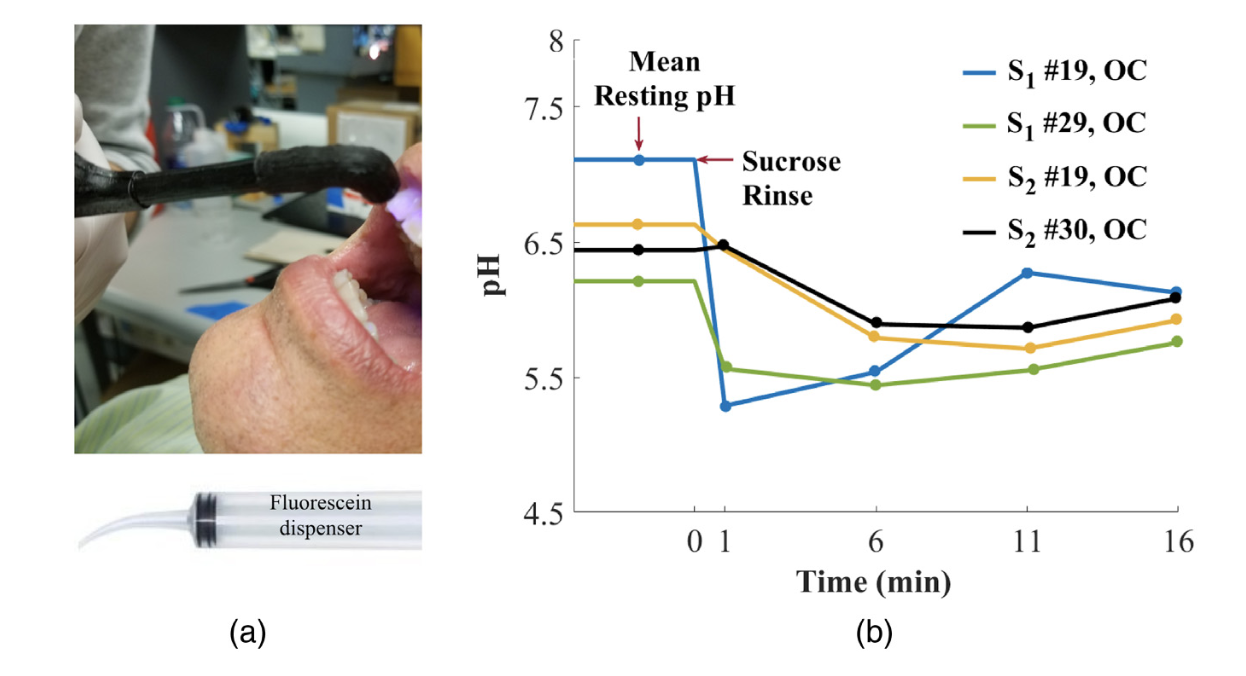@article{10.1117/1.JBO.24.1.017001,
author = {Manuja Sharma and Jasmine Y. Graham and Philip A. Walczak and Ryan M. Nguyen and Lauren K. Lee and Matthew D. Carson and Leonard Y. Nelson and Shwetak N. Patel and Zheng Xu and Eric J. Seibel},
title = {{Optical pH measurement system using a single fluorescent dye for assessing susceptibility to dental caries}},
volume = {24},
journal = {Journal of Biomedical Optics},
number = {1},
publisher = {SPIE},
pages = {1 -- 8},
keywords = {fluorescein, anion, dianion, fluorescence, unmixing, caries, pH, plaque, Teeth, Calibration, Dental caries, Light emitting diodes, Optical testing, Luminescence, In vivo imaging, Fiber optics, In vitro testing, Spectroscopy},
year = {2019},
doi = {10.1117/1.JBO.24.1.017001},
URL = {https://doi.org/10.1117/1.JBO.24.1.017001}
}

